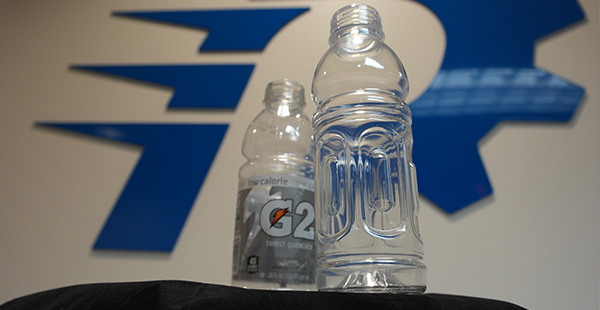Clear prototypes have historically presented a number of challenges for additive manufacturing firms. Wall thickness, curve degree and amount of internal surface area all limited how much clarity could actually be achieved. Depending on the complexity of the part, a “clear” prototype could display a wide range of opacity.
Today, ProtoCAM offers a combination of materials, methods and finishing options—including a proprietary process—that allow customers to acquire the clear look they need, in just about any shape.
Stereolithography
Stereolithograpy (SLA) is the go-to technique for most clear prototyping needs. With SL Clear or Accura 60 resin, SLA can produce an excellent semi-transparent part quickly and cost effectively. Various levels of post-process finishing can enhance the clarity of an SLA part depending on need and budget.
A “clear” finish involves adding a clearcoat and results in basic look-through clarity with some opacity. “Improved clear” finish includes a full sanding step that removes build lines and stair stepping in addition to the clearcoat leaving a part with a higher level of surface consistency and clarity.
Finally, ProtoCAM’s exclusive “bottle clear” finish makes it possible for customers to mimic a production-quality PET plastic bottle or achieve water-clear results, even on parts with large internal cavities and a small opening.
PolyJet 3D Printing
Industrial 3D printing has been generating a whole lot of buzz—especially the power to create multi-material parts. One of the less advertised features is the ability to print transparent components. Four rigid palettes and three flexible palettes can produce a range of clear and tinted transparent material to be used on their own or in combination with opaque colors for an impressive array of translucent shades. Creative freedom is high with PolyJet 3D Printing and cost is moderate.
Urethane Casting
Exceptional see-through clarity can best be achieved with urethane casting, but the process is more labor, time, and cost-intensive. A clear urethane cast prototype requires a master pattern with a mirror-like finish. Although ProtoCAM engineers have found a way to consistently achieve such a high-quality master pattern, it comes with an increase in price and lead time.
In general, the higher the level of clarity, the higher the cost. To ensure you’re clearly getting the right level of transparency at the best price, talk with ProtoCAM’s experienced engineers today.

